Disclaimer For educational purposes only. Do not use as medical advice
<strong>About</strong><strong>Botany</strong><strong>Chinese Medicine</strong><strong>Caution</strong>
| Health Benefits |
| For: Diabetes • Thyroid disorder • Allergy • Frequent urination • High fever • Hemorrhage • Menopause • Insomnia |
| Attributes: Immune system booster • coagulant • antidiabetic • hepatoprotective • hypotensive • anti-aging • antioxidant • antihistamine • emmenagogue |
| Research: |
|
Article:
|
Constituents:
Sterol • acteoside • beta sitosterol • campesterol • arginine • rehmannin • stigmasterol • manitol • glycosides • polysaccharides (catalpol) • over 20 kinds of amino acids • alkaloids • phosphoric acid • organic acids • adenosine • lecithin • vitamin A. The processing reduces the polysaccharides to roughly 66% of fresh roots. According to the Pharmacopoeia of People's Republic of China (2010 Edition), the amount of catalpol should be at least 0.20%, and acteoside at least 0.020% to meet medicinal standards. |
| Photos (Click to enlarge) |
|
|
| Fun Facts |
Other Names: Sukchihwang (Korean) • Jukujio (Japanese)
Plant Family: Scrophulariaceae |
| Shu Di Huang is processed dried rehmannia root. Both the leaves and roots of the rehmannia glutinosa plants are edible. Like many roots, how it is processed has different medicinal effects. This post is focused on the rehmannia that has been dried and processed by combining it with 30% rice wine and then steamed for 8 hours or until it's 80% dry. Then it's sliced for serving. |
| Species |
| Rehmannia Glutinosa ( Sheng Di Huang and Shu Di Huang) are the same root but different processing methods. Shú dì huáng is teamed with water or alcohol. It literally translates into "cooked" di huang. Sheng Di Huang is raw or dried.
Rehmannia Elata is not di huang and is only used for ornamental purposes.
Digitalis purpurea is a foxglove specie, but is poisonous if ingested. However, one of its most powerful chemicals, digoxin, is used to treat heart conditions like atrial flutter, heart failures, and artial fibrillation was isolated in this plant in 1930. It's sold under brand names like Lanoxin. It's on the World Health Organization's list of Essential Medicines. |
| Rehmannia Glutinosa is NOT in the USDA Plant Database. |
|
USA: Rehmannia Glutinosa is not available in the wild. USDA Zones: 7-11
Native: China, Korea
Habitats: Mountain slopes, stony grounds, roadsides
They grow to 2-3 feet tall and up to 24 inches wide. It can be grown in full sun or partial shade. Neutral pH of about 6.5 to 7.0.¹ Bloom Time is May to September. Perennial.
|
| Category: Tonify Blood |
| English: Rehmannia Pinyin: Shu Di Huang Pharmaceutical: Radix Rehmannia Glutinosae Conquitae |
| Organs: Heart • Kidney • Liver Temperature: Slightly Warm |
| Taste: Sweet Toxicity: Low. Can cause mild stomach ache, dizziness, palpitations and diarrhea. Symptoms often subsides after a few doses. |
| Patterns: Blood deficiency • Kidney yin deficiency |
| Actions: Tonify blood • Nourish Yin • Tonify essence • Nourish blood |
| Indications: Blood deficiency • Dizziness • Palpitations • Pale complexion • Night sweats • Irregular menstruation • Post partum bleeding • Uterine bleeding • Steaming bone disorder • Lower back pain • Dizziness • Premature hair graying • Tinnitus • Reduced hearing • Insomnia • Pallor • Menopause • Hot Flushes • Wasting and thirsting disorder • Weakness and pain in lower back and lower limbs |
| Contraindications: Cloying • Pregnancy • Spleen and/or Stomach deficiency • Stagnant phlegm • Stagnant qi |
| Typical Dosage: 9-30g Guidelines |
| Parts Used: Leaves • Root |
| Other: Processed with 30% rice wine and then steamed for 9 hours |
| Combine With |
Purpose |
| Shan Zhu Yu +Shan Yao |
Yin deficiency: Insomnia, dementia, night sweats, dizziness, and tinnitus |
| Dang Gui + Bai Shao |
Blood deficiency: Insomnia, papitations, irregular periods, dizziness. |
| Gui Ban |
Yin deficiency + ascendant Yang: Insomnia, dementia, night sweats, dizziness, and tinnitus |
| Sha Ren |
Blood and spleen deficiency |
| Dui Yao Pairs |
Purpose |
| Shu Di Huang + Dang Gui |
Kidney yin and blood deficiency chronic cough and asthma |
| Shu Di Huang + Sha ren |
Liver/kidney yin deficiency, and blood defficiency |
| Formulas with Shu Di Huang: |
|
Ai Fu Nuan Gong Wan • Ba Xian Chang Shou Wan • Ba Zhen Tang • Bai He Gu Jin Tang • Bao Yin Jian • Bu Fei Tang • Bu Gan Tang • Bu Shen Gu Chong Wan • Da Bu Yin Wan • Da Qin Jiao Tang • Da Ying Jian • Dang Gui di Huang Yin • Dang Gui Ji Xue Teng Tang • Dang Gui Liu Huang Tang • Di Huang Yin Zi • Ding Jing Tang • Du Qi Wan • Er Long Zuo Ci Wan • Gu Ben Zhi Beng Tang • Hu Qian Wan • Jia Wei Shen Qi Wan • Jiao Ai Tang • Jin Shui Liu Jun Jian • Jing Qian Fang • Liu Wei Di Huang Wan • Mai Wei Di Huang Wan • Ming Mu Di Huang Wan • Qi Ju Di Huang Wan • Qing Zao Run Chang Tang • Ren Shen Bu Fei Tang • Ren Shen Yang Rong Tang • Ren Shen Zi Xue Tang • Shen Qi Si Wu Tang • Shi Quan Da Bu Tang • Si Wu Ma Zi Ren Wan • Si Wu Tang • Tai Shan Pan Shi San • TAo Hong Si Wu Tang • Tian Di Jian • Tong You Tang • Yang He Tang • You Gui Wan • Yang Jing Zhong Yu Tang • Yi Yin Jian • You Gui Wan • You Gui Yin • Yu Nu Jian • Zhi Bai Di Huang Wan • Zuo Gui Wan • Zan Yu Dan • Zhu Jing Wan • Zuo Gui Yin
|
| Alert |
Be cautions with all medicine.
- Overdose can lead to loose stools and abdominal issues.
- Do not use bronze or iron pots to cook this herb.
|
| Potential Drug Interactions |
|
Herbal medicine may interact negatively with pharma drugs and other herbs. Examples below:
Herbs: ♦ Antidiabetic: Mei Gui Hua, Du Zhong, Dang Shen, HuoLong Guo, rougui, Celery, Chamomile, Moringa Tree, Basil, Ku Gua, Artichok, Hibiscus, Gou Qi Zi, Ju Hua, Xia Ku Cao, Dang Gui, Zhi Mu, Shi gao, Xuan Shen, Cang Zhu, Shan yao, Huang Qi
Pharma Drugs:♦ Antidiabetic: Acarbose (Precose ), Alogliptin and Metformin HCl Tablets (Kazano), Alogliptin and Pioglitazone Tablets (Oseni ), Albiglutide (Tanzeum), Alogliptin (Nesina), Bromocriptine Mesylate (Cycloset, Parlodel), Canaglifozin (Invokana), Canagliflozin and Metformin (Invokamet), Chlorpropamide (Diabinese), Dapagliflozin (Farxiga), Dulaglutide (Trulicity), Empagliflozin (Jardiance), Glimepiride (Amaryl), Glyburide (DiaBeta, Glynase), glipizide (Glucotrol), Insulin, Miglitol (Glyset), Metformin, Linagliptin (Tradjenta), Saxagliptin (Onglyza), Sitagliptin (Januvia), Nateglinide (Starlix), Repaglinide (Prandin), Tolazamide (Tolinase), Tolbutamide (Orinase, Tol-Tab), Rosiglitazone (Avandia), Pioglitazone (Actos), Pramlintide (SymlinPen 120, SymlinPen 60)
|
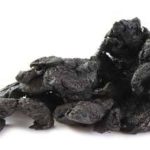

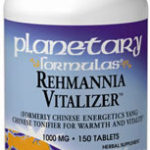
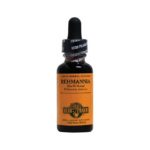
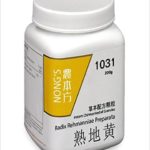
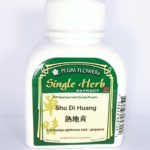
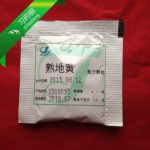
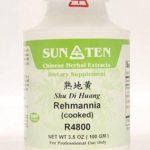
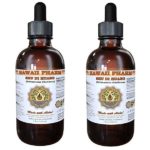
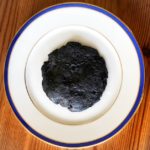

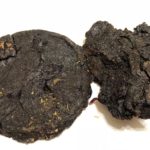
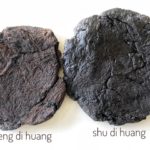
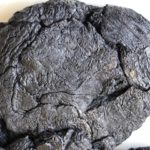
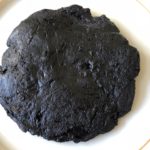
0 Comments